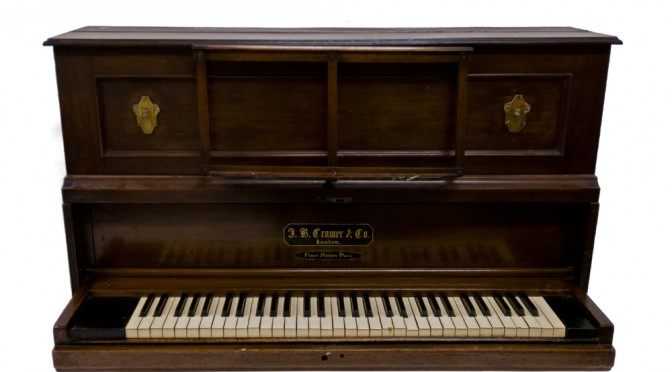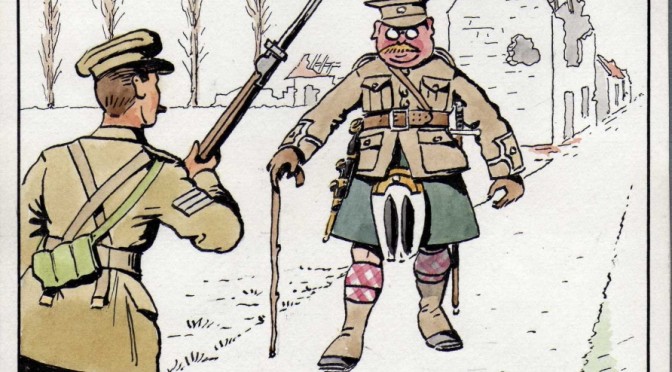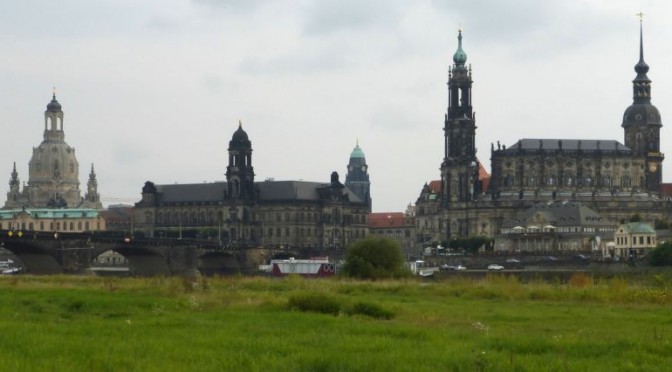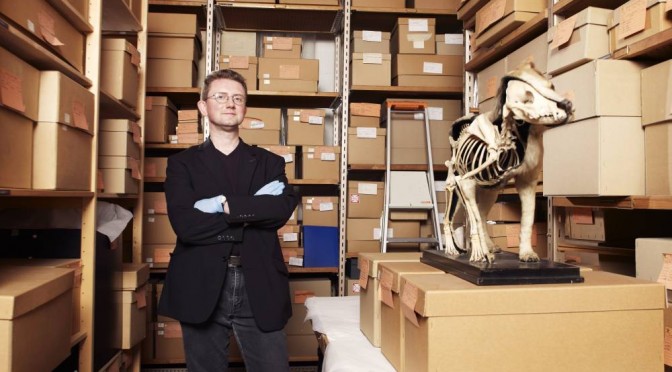I realise, looking at this site’s dashboard, that I’ve not posted much recently. In part this is down to personal distractions; in part it’s because I’ve been doing a lot of reading, and some writing, on the subject of renaissance magnificence – on which, I hope, more will follow later; and in part it’s because I’ve had my head down with things like a complete review of the Horniman Museum’s core documentation procedures prior to an accreditation return (if you work in UK museums, you’ll understand what that entails). Then I received a Twitter notification to say that Katie Hobbs had nominated me in the Twitterati Challenge. Continue reading #TwitteratiChallenge
All posts by Rupert
Captain Scott’s piano
In its new display on domestic keyboard instruments, ‘At Home With Music’, the Horniman Museum has been making something of a piano of the type taken to the Antarctic by Robert Falcon Scott on his first expedition, the British National Antarctic Expedition (also known as the Discovery expedition) of 1901-4.
As I’ve been reading Scott’s account of the expedition, The Voyage of the Discovery, when I’ve been away from home (my copy – 2 vols, London etc: Thomas Nelson & Sons, undated – is conveniently pocket-sized), I thought I’d publish the references which Scott makes to the use of the piano, and events at which it must have been employed.
‘The notorious Major B-D’: my great-grandfather and the Christmas truce
Last Saturday, 20 December, I went back to my old school, Loretto, for the first time in 29 years. I was drawn not by any great feeling of nostalgia for my schooldays, but because the story of my great-grandfather, Archibald Henry Buchanan-Dunlop, was the impetus behind events that were being held there to mark the centenary of the Christmas truce on the Western Front. These culminated in the unveiling, in the school chapel, of a window made by Kate Henderson commemorating the truce and my great-grandfather’s role in it. But what, exactly, was his role?
Continue reading ‘The notorious Major B-D’: my great-grandfather and the Christmas truceWhat I did this summer, or: CIDOC 2014
Being responsible for the Horniman Museum’s documentation, I normally find myself sitting in front of a computer screen, or in meetings. Every once in a while, though, I’m allowed out to meet my colleagues from other institutions, find out what they’re doing, and compare experiences. Previously, this has usually been at the annual OpenCulture conference run by Collections Trust; but this year I spent four days in Dresden at the 2014 annual conference of the Comité International pour la Documentation (CIDOC), the branch of the International Council of Museums (ICOM) interested in documentation.
Continue reading What I did this summer, or: CIDOC 2014
Learning from the past 4: putting information online
This is the last of a series of posts looking at the lessons about museum documentation thrown up whilst I was researching my recent article on the website of the Horniman Museum (where I work as Documentation Manager), investigating the objects related to the ‘Heroic Age’ of Antarctic exploration which were once owned by the Horniman. I’ve already looked at accession registers, capturing and sharing information, and recording what happens to objects. This last post is slightly different, as it’s less about the past, and more about the present: I want to talk about my intentions when putting information about the Antarctic relics – and all the Horniman’s objects – online.
Continue reading Learning from the past 4: putting information online
Learning from the past 3: recording what happens to objects
This is the third of a series of posts looking at the lessons about museum documentation thrown up whilst I was researching my recent article on the website of the Horniman Museum (where I work as Documentation Manager), investigating the objects related to the ‘Heroic Age’ of Antarctic exploration which were once owned by the Horniman. I’ve already looked at accession registers, and capturing and sharing information; in this piece, I’ll talk about recording what happens to objects; and a final post will look at how we can make that information available online.
Continue reading Learning from the past 3: recording what happens to objects
Learning from the past 2: capturing and sharing information
This is the second of a series of posts looking at the lessons about museum documentation thrown up whilst I was researching my recent article on the website of the Horniman Museum (where I work as Documentation Manager), investigating the objects related to the ‘Heroic Age’ of Antarctic exploration which were once owned by the Horniman. I’ve already looked at accession registers; in this piece, I’ll talk about capturing and sharing information; further posts will look at recording what happens to objects; and finally, at how we can make that information available online. Continue reading Learning from the past 2: capturing and sharing information
Learning from the past 1: accession registers
A couple of weeks ago, I took advantage of the centenary of the departure of Sir Ernest Shackleton’s Imperial Trans-Antarctic Expedition (also known as the Endurance expedition) to publish an article on the website of the Horniman Museum (where I work as Documentation Manager), investigating the objects related to the ‘Heroic Age’ of Antarctic exploration which were once owned by the Horniman. I’ve already said something about what these objects add to our knowledge of Antarctic history, but the process of researching the article has also thrown up some valuable lessons in museum documentation, and I thought I’d share them here, in a series of posts. First, I’ll look at accession registers; then, capturing and sharing information; third, recording what happens to objects; and finally, looking at how we can make that information available online.
Continue reading Learning from the past 1: accession registers
Antarctic relics
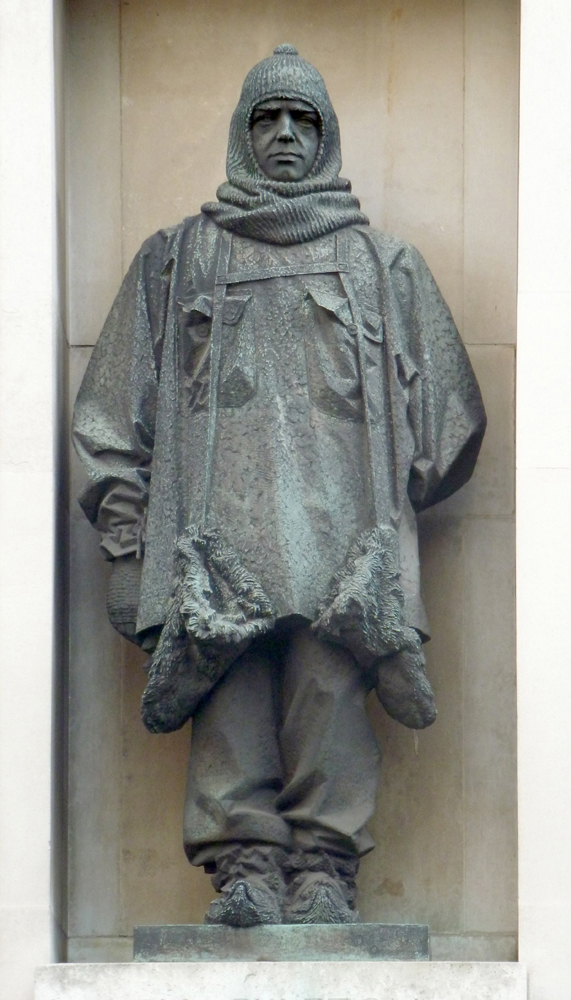
100 years ago today, Sir Ernest Shackleton’s Endurance left Plymouth for the Antarctic. The story of his Imperial Trans-Antarctic Expedition – how the Endurance was trapped by ice, and drifted for hundred of miles before being crushed; how her crew camped for months on the drifting ice, then rowed for 6 days to reach the desolate and uninhabited Elephant Island; and how Shackleton and five companions sailed an open boat across 800 miles of the world’s stormiest seas before Shackleton, Crean and Worsley walked non-stop for 36 miles across the icy mountains of South Georgia to fetch help – is well known, and I’ll say no more about it here.
But the centenary of Shackleton’s departure also seemed an ideal time to publish an article on the Horniman Museum’s website about the Antarctic objects which the museum once owned. Continue reading Antarctic relics
A sordid tale of fast living in the stores?
A few weeks ago, I was standing in the Pot Room, accompanied by a dog who was half skeleton, half fur, being told by someone I’d never met before that I was losing it.
Continue reading A sordid tale of fast living in the stores?

